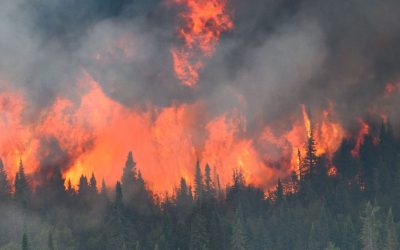The clearing of forests for agriculture or logging is progressing at a worrisome rate around the world. But that is not the whole story. A new study shows that, in richer countries at least, many more trees are springing up than are being felled.
Researchers led by Pekka Kauppi of the University of Helsinki in Finland sought to identify exactly how much carbon is stored in the world’s forests. They analysed reports on the state of forests in 50 countries in 1990 and 2005 compiled by the United Nations Food and Agriculture Organisation. They also used information contained in national databases dating back hundreds of years.
Instead of merely estimating the area of forest in each part of the world (the traditional way of measuring forest cover), they took into account the volume of timber, the weight of the organic matter and the density of trees to calculate what they dubbed the “forest identity”, a measure of the carbon-capturing capacity of forests. The results, published in the Proceedings of the National Academy of Sciences, show that in all the countries that have a GDP per head of $4,600 or more—making them richer than, say, Chile—forests are recovering. Some countries that are poorer than this but which have policies to promote tree growth also showed an overall increase in their capacity to sequester carbon dioxide.
Globally, the total number of trees and associated organic matter has fallen year on year, in some places for as long as records have existed. Poor management in Brazil and Indonesia has been a particular problem: both countries lost greater volumes of timber than America and China even though America and China harvested more wood.
But elsewhere the picture was less gloomy. Tree cover in tropical areas such as El Salvador and the Dominican Republic has grown in recent years. Russia and Scandinavia are gaining trees. In fact all major temperate and boreal forests are expanding. The researchers calculated that the “forest identity” had increased over the past 15 years in 22 of the world’s 50 most forested countries.
Forests are also gaining ground in the world’s two most populous countries, India and China. Although it is still a poor country, India’s forests are no longer shrinking. In China the density of forest has fallen since 1949 in many parts of the country but the area of its forested land has steadily risen. The net result is an increase in the volume of China’s standing timber. Other Asian countries that have gone from deforestation to afforestation include South Korea and Vietnam.
The researchers argue that the trend is partly the result of social changes that occur as countries develop and become wealthier, such as the movement of rural dwellers to cities. Urbanisation decreases the likelihood of trees being felled for heating and building. As the world becomes more prosperous, it also becomes woodier. News of the death of forests appears to have been greatly exaggerated.


